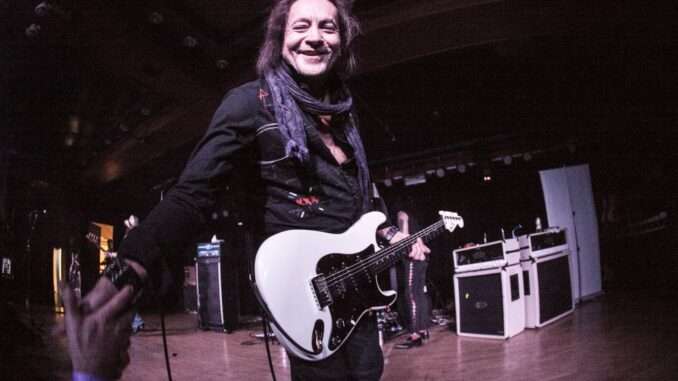
Jake E. Lee has faced his share of challenges over the decades — from the highs of touring the world as Ozzy Osbourne’s lead guitarist to the lows of industry disputes and personal battles. But nothing could have prepared him for the terrifying events of October 2024, when what began as a quiet morning walk with his dog ended with him being shot three times.
The former Ozzy Osbourne and Badlands guitarist was returning home after an early stroll when he spotted two criminals in the act of stealing his neighbor’s motorcycle. Despite the danger, Lee confronted them verbally — a decision that almost cost him his life.
“They pulled out a gun and started shooting,” Lee recalled. “The first shot to hit me was in my left forearm. It entered about an inch below the elbow on the underside and exited topside. It felt like a burn, not particularly painful — just a quick burning sensation. I thought it must have been a graze.”
It wasn’t. That wound was a direct hit to his fretting arm, a guitarist’s lifeline. Miraculously, the bullet missed bones and the elbow joint, sparing him from catastrophic damage. “The scars aren’t much bigger or darker than some of my age spots, and I’d probably have to point them out for you to notice,” Lee said. “All my fingers still move well. Initially, I lost the feeling in the back of my hand, but it’s slowly coming back. I’m most thankful my dog wasn’t hurt and that the damage to my fretting arm was minimal.”
The shooting left Lee in intensive care, but doctors were stunned by how quickly he began to heal. Still, the psychological aftermath was harder to overcome. “The world got darker, more dangerous, not as fun after that night,” he admitted. “I dwelled on it a little bit after I got shot, and then I realized it wasn’t healthy.
So I just kind of pushed it aside and didn’t think about it too much. Now, the world’s getting back to where I can enjoy it again.”
Lee’s return to music came sooner than many expected. In early 2025, he took the stage at the farewell concert for Ozzy Osbourne and Black Sabbath, delivering electrifying performances of “The Ultimate Sin” and “Shot in the Dark.” The crowd roared — and fans could see the relief and pride on his face. Against all odds, his playing ability was intact.
But Lee revealed that the shooting wasn’t his only physical struggle in recent years. Even before the incident, he had been battling severe arthritis in his wrist, which had already forced him to stop playing guitar for a couple of years. “I finally got X-rays, and they said there’s no cartilage left. It’s bone on bone whenever I move it,” he explained. “It didn’t feel good. I started doing rehab — a lot of exercising, a lot of stretching — and it was getting better. And then… I walked my dog.”
That combination of arthritis and recovery from gunshot wounds required months of dedication, patience, and stubborn determination. His ability to return to the stage wasn’t just luck — it was the result of focused rehabilitation and an unwavering refusal to give up on his craft.
For fans who have followed Jake E. Lee since his 1980s heyday with Ozzy Osbourne, this comeback has been nothing short of inspirational. Known for his fiery playing style and contributions to albums like *Bark at the Moon* and *The Ultimate Sin*, Lee has always had a reputation for resilience. But surviving a near-fatal shooting and still being able to perform at the highest level has cemented his image as a fighter in both life and music.
Looking ahead, Lee says he’s focusing on enjoying life again — one day at a time. “You can’t live in fear,” he said. “If I let what happened control me, then the guys who shot me would have taken more than just my health. They’d have taken my music, my joy, my peace of mind. I’m not giving them that.”
As for the fans who stood by him, Lee is deeply appreciative. “I’m grateful for everyone who reached out, who sent messages, who prayed for me. That support means more than people realize. It reminds me why I do this — why I keep playing.”
In the end, Jake E. Lee’s story isn’t just about survival. It’s about refusing to surrender to fear, overcoming physical and emotional pain, and holding on to the things that give life meaning. Whether it’s a beloved dog, a treasured guitar, or the roar of a crowd, Lee’s journey is proof that even in the darkest moments, there can still be light — and music.
Leave a Reply